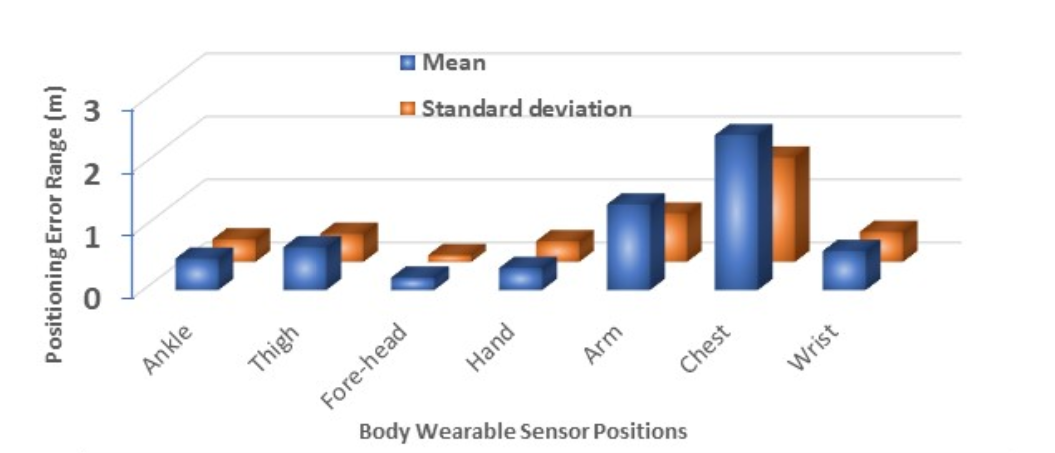In recent years, several Ultrawideband (UWB) localization systems have already been proposed and evaluated for accurate position estimation of pedestrians. However, most of them are evaluated for a particular wearable sensor position; hence the accuracy obtained is subject to a given wearable sensor position. In this paper, we study the effects of body wearable sensor positions i.e., chest, arm, ankle, wrist, thigh, fore-head, hand, on the localization accuracy. The conclusion drawn is that the fore-head is the best, and the chest is the worst body sensor location for tracking a pedestrian. While the fore-head position is able to set an error lower than 0.35 m (90th percentile), the chest is able to set 4 m. The reason for such a contrast in the performance lies in the fact that in NLOS situations, the chest as an obstacle is larger in size and thickness than any other part of the human body, which the UWB signal needs to overcome to reach the target wearable sensor. And so, the large errors arise due to the signal arriving at the target wearable sensor from reflections of a nearby object or a wall in the environment.

